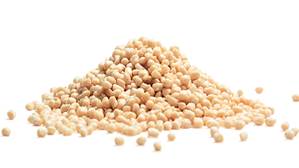

Forest industry company UPM has developed a biocomposite material for 3D printing. The material combines wood fibres and organic biopolymers. Wood fibres create a natural-feeling matte surface for the print. Material can be produced in light and dark tones.
The composite applies for both large and small, but still precise 3D printings. Detailed printing is possible, because the material fits in small nozzles as well.
The material cools down quickly and shrinks only a little. It improves the stability of printing and suits also large scale 3D printings. The material, called UPM Formi 3D, is manufactured and sold as granulates. Products made of it are non-toxic and odourless.
The composite can be colored and die-cast, or print as plastics. Completed prints can be worked like wood by polisihing, painting and glueing. Typical uses for the material are concept models used in architecture, design products and teaching tools, for example.
UPM Formi 3D has already been used in speaker boxes and car manufacturing. Factories producing the composite are situated in Finland and Germany.
Common materials used in 3D printing are polyactide (PLA) and acrylonitrile butadiene styrene (ABS). Polyactide is a thermoplastic made of, for example, corn, sugar cane or sugar beet. This means that it also can be bio-based.
ABS is produced from fossil fuels, which means that its environmental footprint is larger than that of PLA or UPM Formi 3D.
